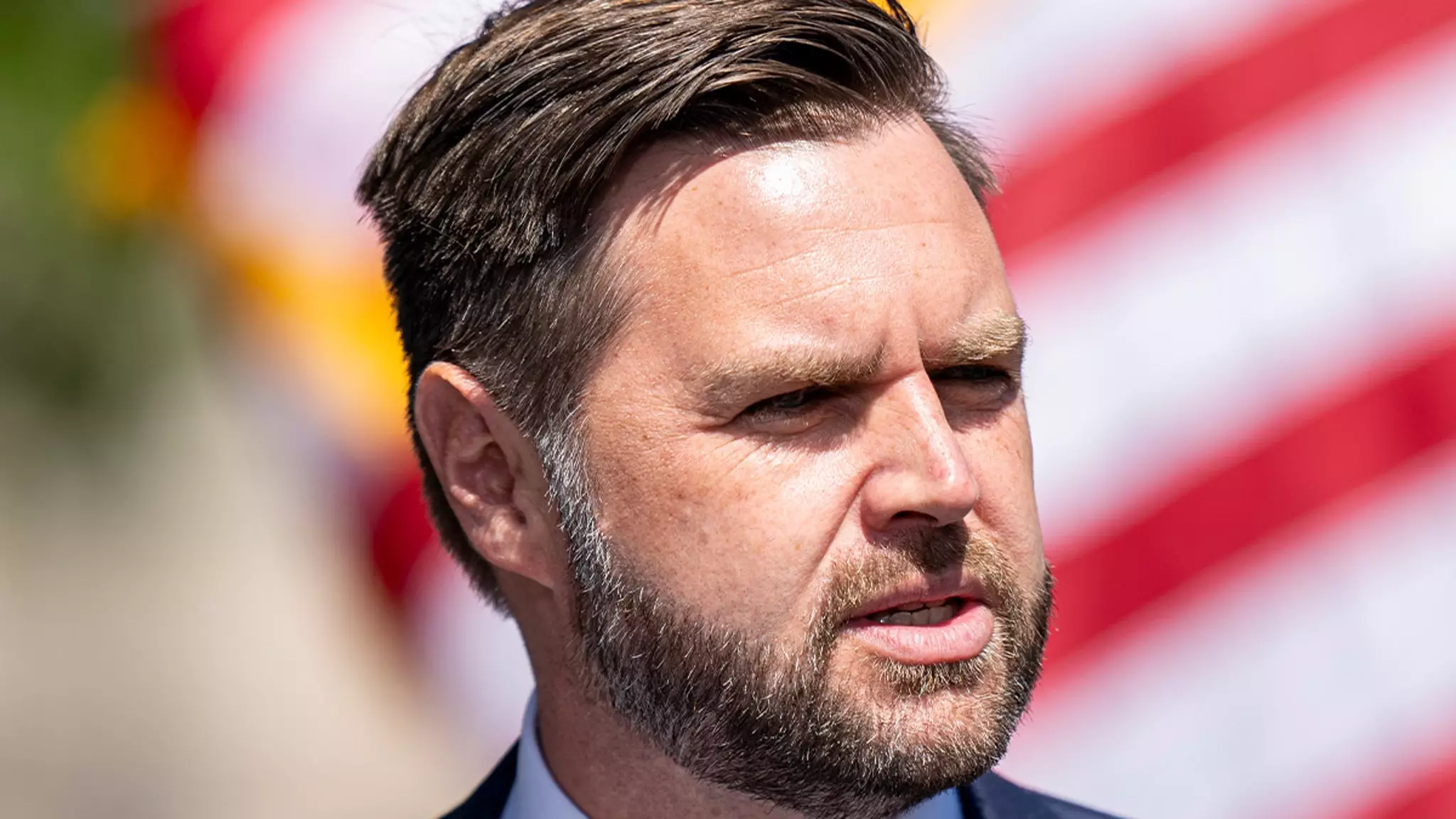The atmosphere was thick with tension at Washington’s Kennedy Center last Thursday night, as the arrival of J.D. Vance elicited immediate disdain from the audience, resulting in a cacophony of boos. Vance’s presence, paired with the backdrop of President Donald Trump’s recent appointment as chairman of the esteemed institution, created a vivid tableau of political and cultural friction. As the National Symphony Orchestra began its performance featuring the acclaimed soloist Leonidas Kavakos, the energy in the room highlighted a growing rift between the traditional arts community and the current political climate.
Vance, visibly unfazed, greeted his critics with an unyielding grin, attempting to project an image of resilience despite the backlash. However, his complacency raises significant questions: Does his perceived indifference signify a dismissal of public sentiment, or is it a strategic choice to garner sympathy from like-minded constituents? The fact that he appeared to enjoy his drink while waves of discontent rained down on him dilutes the seriousness of the situation, leaving observers to ponder if he’s genuinely unconcerned or merely putting on a brave face in a hostile environment.
Transformational Changes at the Kennedy Center
At the crux of Thursday’s unrest lies Trump’s controversial quest to reshape the Kennedy Center’s programming. With a staunch opposition to what he labels “woke” content, Trump’s determination to steer the institution’s artistic vision has significant implications for the future of American performing arts. His abrupt appointment of Vance’s wife, Usha, alongside a board overhaul that ousted previous members, signals a seismic shift that could potentially alienate artists and audiences alike.
Amidst this upheaval, the response from the artistic community has been both swift and telling. High-profile figures such as Issa Rae and Shonda Rhimes have voiced their discontent, with Rae going so far as to cancel her sold-out event. These artistic withdrawals not only reflect individual grievances but also signal a collective rejection of Trump’s leadership that many believe undermines the integrity of the arts. The implications of these actions may extend far beyond personal projects, fostering a broader conversation on the intersection of politics and culture.
The Spectacle of the Night
As the evening unfolded, the contrast between the political undercurrents and the elegance of the performance created a spectacle worthy of reflection. The National Symphony Orchestra, a treasure of American culture, carried on with their evening, unperturbed by the drama unfolding in the boxes. The juxtaposition of art and politics raises an essential question: Can the arts truly remain apolitical in the face of such glaring political theater? Or does their very existence compel them to respond?
Vance’s casual demeanor amidst the audience’s uproar also poses an interesting dilemma about the nature of leadership. Is steadfastness a virtue, or does disengagement from public sentiment lead to a disconnection that can endanger a leader’s efficacy? As culture continues to evolve within the constraints of political discourses, the roles of individuals like Trump, Vance, and the artists they affect are becoming increasingly complex and contested.
This event at the Kennedy Center serves as a microcosm of a broader cultural debate in America, with potential ramifications that echo through the halls of power and creative expression alike.

